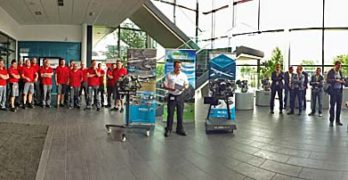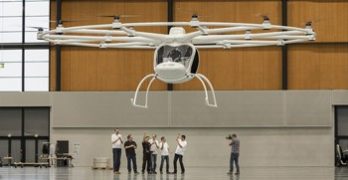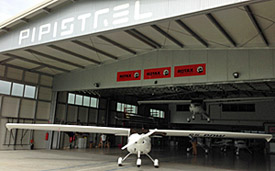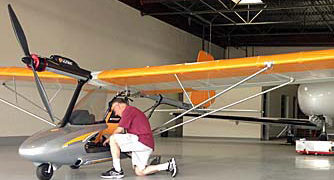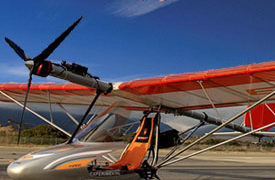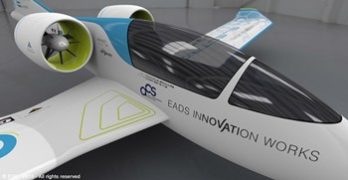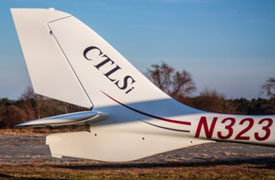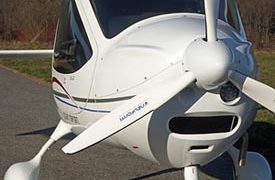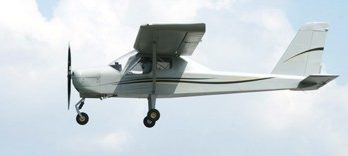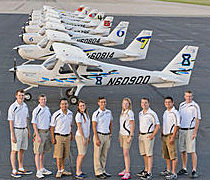I am writing from Europe, from two neighboring towns in what’s called Upper Austria: Wels and Gunskirchen. The former is where the Rotax flying field is located and the latter is where the sprawling Rotax factory is headquartered. The occasion is the 25th anniversary celebration for the 912 engine series and, by good fortune or exquisite planning, the simultaneous occasion for production of the 50,000th engine in the 9-series.
The large Austrian company that employs 1,100 people in a modern factory produces engines for a variety of applications in large volumes. Among these are engines for BMW motorcycles and others plus a range of engines used in their own products including snow mobiles, watercraft, and on- and off-road vehicles. They also make engines for unmanned air vehicles or drones and, as you are well aware, aircraft engines for Light-Sport, light kits, and ultralight aircraft. Of the latter, they’ve built more than 170,000 engines.
Search Results for : CT AND hand control
Not finding exactly what you expected? Try our advanced search option.
Select a manufacturer to go straight to all our content about that manufacturer.
Select an aircraft model to go straight to all our content about that model.
Quick, say “Octodecacopter”…and Welcome the Future
It’s premature if not off the point to say this exotic, beautiful prototype will be the death of the helicopter. I will flat out make a prediction: a whole new type of flight is here … and it will change everything … and I mean everything about how we fly.
I was musing the other day, while catching up on the latest multi-rotor RC model technology with which to populate my Christmas wish list, about how long it would take before we saw a serious effort to build a human-carrying version. Clearly I was way behind the buzz curve: talk about instant gratification! E-volo of Karlsruhe, Germany has just made a lightspeed leapfrog over pretty much every other vertical takeoff/landing design or project I’ve heard about. The gamechanger: the just-maidened VC200 Volocopter. Watch the video, then read on. This project and others like it is going to change flight as we know it, make no mistake.
After Aero — Visiting Rotax and Pipistrel
We paid two memorable visits after Aero ended and I’ll tell you a little about each one … but first … While I was at Pipistrel in the office of boss Ivo Boscarol, he received word that Matevz Lenarcic had reached the North Pole on his flight reported earlier. Congratulations on this achievement; a long flight across the North Atlantic remains. Godspeed! ••• The two visits were to Rotax Aircraft Engines and to Pipistrel. These two are not geographically far apart and work closely. Each spoke highly of the other and both companies are highly impressive places to visit.
BRP-Powertrain is the parent behind Rotax Aircraft Engines. Though occupying a sizeable amount of real estate in the immense BRP-Powertrain factory, the aircraft engines are the “hand built” portion of the production. Fast-paced, largely-automated, robot-assisted assembly lines manufacture many thousands of engines each year for such products as SeaDoo, BMW motorcycles, and other well-known brands.
Electric Skyway — Flying GreenWing’s eSpyder
I was a little nervous, I admit. Oh, I wasn’t worried about flying the eSpyder as an airplane. Many years ago I logged plenty of hours in a Flightstar single place ultralight and this was essentially the same airplane. Except it wasn’t identical; this one was powered by an electric motor and it’s funny how that changes everything. Like most of you, I only have experience with gasoline engines (though I have logged many hours of soaring time with no engine whatsoever). So, I have the usual set of knowledge and reflexes about fuel consumption, engine noise, power settings, climb rates … and the sounds of all these things. It’s all different on an electric airplane. Much as I had awaited this opportunity, I found myself apprehensive about the new experience. I’ve had three two-stroke engines go silent on me and I simply didn’t know exactly what to expect from an electric motor.
New Manufacturer of Electric Aircraft
Once upon a time the light aircraft industry announced new manufacturers and models at the rate of two, three, or even more every month …for several years. As with every maturing industry before, this torrid pace had to slow. Yet the party isn’t over, far from it. Contrarily, I am aware of several new projects in the works and we all know of some (Icon, Terrafugia, Lisa among others) where companies have been working on their designs for some years but they have yet to secure FAA approval as a Light-Sport Aircraft. Neither has GreenWing International, a new company announced this week though that may change quickly enough.
“Yuneec International, a world leader in electric power systems, is proud to announce the formation of GreenWing International, [which is] entirely focused on bringing the revolution of electric power to the global general aviation market,” announced company CEO Tian Yu. Enthusiasts following electric powered aircraft development first saw Yuneec’s e430 at AirVenture 2009.
Fantasy in Paris — Electric Twin & More
“How ya gonna keep ‘em down on the farm … after they’ve seen Paree?” That’s a timely reprise of an old show tune to bring our attention to the Paris Air Show, which is sending out some ripples in the “What’s New” Dept. Chances look better every year that electric flight will be a major player in how we take the air. And for those of you who think that’s just a bunch of hot air, you could be right, too! Read on.
Jason Paur who writes for Wired magazine gets to do all the fun stuff I just get to fantasize about … specifically, electric flight. He’s at Le Bourget Field in Paris and filed this report on an exciting new electric prototype that fits nicely into the Light Sport Aircraft specification. Here are some highlights and you can read the rest first hand at the link above.
CTLSi, as in *sigh*
Yes, as the pics show, I did indeed take advantage of a rare, calm, beautiful, warm (for winter) day in New England to drive over to Tom Peghiny‘s Flight Design USA and take my first hop in a fuel-injected Rotax-powered LSA: the new CTLSi. Company Chief Pilot Jonathan Carter did me the honors as we went for a spin the last hour of the clear-sky, gorgeous day: no bumps, no ATC to deal with, just that good smooth, strong CT climb up and away from the company’s little paved strip in Woodstock, Connecticut.
CTLSi, latest version of the industry-leading CT line (the company’s been at the front of the pack for 7 years), is noteworthy primarily for its new powerplant, which dramatically improves fuel economy, starts easier, and runs smoother. I’ll have a full flight report on the airplane in the spring issue of the magazine. But I don’t want to wait to say that for me, this is a wonderfully refined airplane and a real step forward from the version I flew four years ago when I got my Sport Pilot rating with instructor rock ‘n rollin’ CFI John Lampson (he moonlights with a popular rock band, Stealing Jupiter, in the Northeast).
iLSA & CTLSi — Much More than Fuel Injection
The first iLSA are flying in the USA. Springboarding from Apple’s famous iDevices, why not iLSA? This stands for “i” Light-Sport Aircraft, meaning they’re fuel injected, which today suggests Rotax’s new 912 iS engine. Tecnam has announced P2008s with the new powerplant. Pipistrel has iS models, too. Others will follow, although Remos indicated they are taking a wait-and-see approach to the new powerplant. All models remain available with the carbureted version of the 912s in 80 or 100 horsepower. (See this earlier article about the newest Rotax and this one with a video.)
Market leader Flight Design has iLSA arriving in all corners of the country under the slightly changed name of CTLSi. Flight Design USA president Tom Peghiny recently assembled a couple of these airplanes and logged several flights on them. He offered a series of comments on how his newest LSA is an improvement in last year’s model.
Tecnam’s New Entry-Level (and Affordable!) LSA
Tecnam North America’s CEO Phil Solomon dropped me a line yesterday to make sure I heard the news that there’s a new, all-metal, budget-priced Tecnam LSA, just released, that should generate some enthusiasm among the “LSA: too expensive!” crowd.
Called the P92 Echo Classic Light it’s priced at $74,999, and that’s fly away from Richmond, Virginia “with no added costs for anything,” says Phil! “The idea is to meet the needs for pilots, flight clubs and partnerships,” he told me, “who want the lowest-cost, fully-built metal aircraft from a major manufacturer.”
“The structure is identical to all the P92 series (a 20-year production success) but to save weight the control surfaces (flaps, ailerons, rudder, stabilator) are fabric covered. The main gear and nose gear are the same as the Eaglet but to save weight the wheels and tires are smaller. As you know the sprung steel landing gear mated to a metal airframe is excellent at absorbing less than perfect landings!” I think by “as you know” he means he’s heard about my landings…doh!…but also that metal airframes have been the standard of General Aviation training for decades precisely for their ability to minimize the embarrassments and damage that the laws of gravity cause.
Grand LSA News Wrap-Up… Pre-Oshkosh
CESSNA’S DISCOVER FLYING
I met new business leader for the Skycatcher LSA, Tracy Leopold, at Sun ‘n Fun 2012 where she confirmed the Wichita giant’s support for their lightest aircraft, now being assembled in Independence alongside other Cessna models. As summer began, Tracy’s Skycatcher group amped up their game with a program called Discover Flying Challenge. *** After hiring eight university graduate flight instructors — plus a ninth to act as dispatcher — the team took off in all directions and will reunite again at AirVenture 2012. Meanwhile, the youthful team is visiting Cessna Pilot Centers and non-CPC FBOs plus fly-ins and air shows all the while doing what college grads do these days: updating Facebook and Twitter feeds and blogging about their activities. *** “We wanted to do something different, something that would get the attention of the next generation of pilots while at the same time getting the Skycatcher in front of the public,” explained Tracy.
- « Previous Page
- 1
- …
- 6
- 7
- 8
- 9
- 10
- …
- 62
- Next Page »


